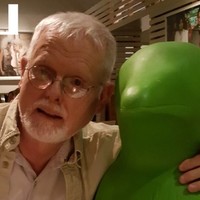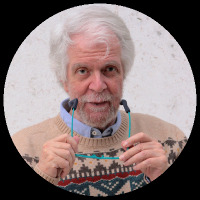
Johannes Kabatek
Born in 1965 in Stuttgart/Germany. Studies of Romance Philology, Political Science and Musicology in Tübingen and Málaga. 1991 MPhil; 1995 PhD University of Tübingen. 1993-1999, Assistant Prof. Univ. Paderborn and Tübingen; 2000-2013 professorships in Erfurt, Freiburg, Tübingen (Germany); since September 2013 full professor (chair) for Ibero-Romance linguistics at the University of Zurich. Visiting professorships in the US, in Brazil, Chile, Italy and Spain; Corresponding member of the Royal Galician, the Royal Spanish and the Chilean Language Academy. Dr. h.c. University of Suceava (2016). President of the Societas Linguistica Europaea (2020-21). Research areas: Romance linguistics (French, Ibero-Romance Languages); Language contact, minority languages, Medieval Spanish; Galician, Catalan; Brazilian Portuguese; Historical Linguistics; Historical syntax, spoken and written language. Editor-in-chief Revista Internacional de Lingüística Iberoamericana; Energeia. Numerous publications on Eugenio Coseriu; director of the Coseriu Archives from 2005 onwards, host of www.coseriu.com.
More information at: https://www.rose.uzh.ch/de/seminar/wersindwir/mitarbeitende/kabatek.html
Contact: kabatek@rom.uzh.ch
Phone: Tel.: +41 / (0)44 / 634 36 10
Address: Romanisches Seminar
Zürichbergstr. 8
CH-8032 Zürich, Switzerland
More information at: https://www.rose.uzh.ch/de/seminar/wersindwir/mitarbeitende/kabatek.html
Contact: kabatek@rom.uzh.ch
Phone: Tel.: +41 / (0)44 / 634 36 10
Address: Romanisches Seminar
Zürichbergstr. 8
CH-8032 Zürich, Switzerland
less
Related Authors
Noel B. Salazar
KU Leuven
Na'ama Pat-El
The University of Texas at Austin
Hannes A . Fellner
University of Vienna
Philipp Wolfgang Stockhammer
Ludwig-Maximilians-Universität München
David Seamon
Kansas State University
Louis de Saussure
University of Neuchâtel
Armando Marques-Guedes
UNL - New University of Lisbon
Eitan Grossman
The Hebrew University of Jerusalem
Martin Haspelmath
Max Planck Institute for Evolutionary Anthropology
José Antonio Mazzotti
Tufts University
InterestsView All (29)










Uploads
Books by Johannes Kabatek
contactului strâns cu Eugeniu Coşeriu şi a conştiinţei că multe din cele ce
obişnuia să spună Eugeniu Coşeriu elevilor săi şi persoanelor apropiate încă nu
erau scrise şi, totuşi, pentru toţi cei care îl cunoşteau, ţineau, în mod nemijlocit, de
înţelegerea operei şi a persoanei sale. Astfel ne-am întâlnit, în câte două
săptămâni fierbinţi de august, în anii 1994 şi 1995, în Casa lui Coşeriu, aflată în
Kirchentellinsfurt, în apropiere de Tübingen, pentru a înregistra aceste conversaţii
care durau, adesea, până noaptea târziu. Ţelul nostru, în aceste întâlniri, era de a
realiza o contribuţie la înţelegerea unei opere complexe şi a unei personalităţi
complexe şi să facilităm ca aceste două aspecte şi relaţia lor reciprocă să fie
lămurite chiar din prima sursă.
Se divide en tres partes: la primera consta de estudios en los que se reflexiona sobre las posibilidades metodológicas del uso de corpus (a partir de ejemplos concretos de corpus iberorrománicos), mostrando cómo estas pueden contribuir al desarrollo de la lingüística histórica; en la segunda parte se presentan nuevos corpus y sus posibles aplicaciones, y en la tercera se ofrece una serie de estudios basados en el trabajo con corpus. Estos tratan tanto aspectos generales de épocas determinadas (mostrando cómo los corpus permiten caracterizar la lengua de una época y su dinamismo) como aspectos particulares, que van desde la ortografía a la sintaxis y la construcción del discurso pasando por aspectos fonéticos y morfológicos.
El conjunto de los trabajos ofrece una visión de actualidad de los estudios de estos dos campos que tanto han evolucionado en los últimos años.
A tese principal deste traballo expón que o papel fundamental na creación dunha lingua común galega e dun galego culto non é só labor dos planificadores lingüísticos senón tamén, e en grande medida, dos falantes mesmos, falantes de galego nos ámbitos públicos e contribuíntes por excelencia á formación das novas tradicións de discurso. Na actualidade hai, xa que logo, varios modelos procedentes de falantes de contextos diversos.
Os falantes como lingüistas analiza os distintos modelos coexistentes e a súa respectiva formación, os procesos de converxencia e diverxencia que hai na sociedade galega actual xunto coa tensión presente entre castelanización e tradicións propias, poñendo en correlación – á base dun corpus de entrevistas – os datos biográficos, a fala e os xuízos metalingüísticos dunha serie de persoas: locutores de radio e televisión galegas, profesores de galego e estudiantes de Filoloxía Galega; todos eles procedentes de variados estratos sociais e lingüísticos, desde grupos altamente castelanizados ata grupos practicamente monolingües en galego.
Papers by Johannes Kabatek
Galician, which will be discussed in two different parts: the first shall refer to historical aspects, and the second shall concentrate on the current differences and mutual influences between orality and writing. The chapter departs from some theoretical notions that allow for a clear distinction as to the medial difference between the spoken and the written code and the conceptual difference between what is generally associated with both: what Koch and Oesterreicher (2001) call the “language of immediacy” and
the “language of distance”. The diachronic part will first discuss the emergence of a written variety in medieval Galician and then trace the basic evolution of the Galician language with regards to the tension between oral and written communication.
It will be shown how the history of modern written Galician (from the first texts of the so-called “pre-Rexurdimento” onwards) is marked by a process of “diaphasic differentiation” (Kabatek 1997a): here, the selection of elements considered to be adequate for the written language and the “sorting out” of others as well as the stylistic differentiation and widening of a certain range of written varieties will be focused. Some remarks on the orthographic debates will open the second part. The remainder of the text will be
dedicated to the relationship between the contemporary written and spoken standards and the respective non-standard varieties.
contactului strâns cu Eugeniu Coşeriu şi a conştiinţei că multe din cele ce
obişnuia să spună Eugeniu Coşeriu elevilor săi şi persoanelor apropiate încă nu
erau scrise şi, totuşi, pentru toţi cei care îl cunoşteau, ţineau, în mod nemijlocit, de
înţelegerea operei şi a persoanei sale. Astfel ne-am întâlnit, în câte două
săptămâni fierbinţi de august, în anii 1994 şi 1995, în Casa lui Coşeriu, aflată în
Kirchentellinsfurt, în apropiere de Tübingen, pentru a înregistra aceste conversaţii
care durau, adesea, până noaptea târziu. Ţelul nostru, în aceste întâlniri, era de a
realiza o contribuţie la înţelegerea unei opere complexe şi a unei personalităţi
complexe şi să facilităm ca aceste două aspecte şi relaţia lor reciprocă să fie
lămurite chiar din prima sursă.
Se divide en tres partes: la primera consta de estudios en los que se reflexiona sobre las posibilidades metodológicas del uso de corpus (a partir de ejemplos concretos de corpus iberorrománicos), mostrando cómo estas pueden contribuir al desarrollo de la lingüística histórica; en la segunda parte se presentan nuevos corpus y sus posibles aplicaciones, y en la tercera se ofrece una serie de estudios basados en el trabajo con corpus. Estos tratan tanto aspectos generales de épocas determinadas (mostrando cómo los corpus permiten caracterizar la lengua de una época y su dinamismo) como aspectos particulares, que van desde la ortografía a la sintaxis y la construcción del discurso pasando por aspectos fonéticos y morfológicos.
El conjunto de los trabajos ofrece una visión de actualidad de los estudios de estos dos campos que tanto han evolucionado en los últimos años.
A tese principal deste traballo expón que o papel fundamental na creación dunha lingua común galega e dun galego culto non é só labor dos planificadores lingüísticos senón tamén, e en grande medida, dos falantes mesmos, falantes de galego nos ámbitos públicos e contribuíntes por excelencia á formación das novas tradicións de discurso. Na actualidade hai, xa que logo, varios modelos procedentes de falantes de contextos diversos.
Os falantes como lingüistas analiza os distintos modelos coexistentes e a súa respectiva formación, os procesos de converxencia e diverxencia que hai na sociedade galega actual xunto coa tensión presente entre castelanización e tradicións propias, poñendo en correlación – á base dun corpus de entrevistas – os datos biográficos, a fala e os xuízos metalingüísticos dunha serie de persoas: locutores de radio e televisión galegas, profesores de galego e estudiantes de Filoloxía Galega; todos eles procedentes de variados estratos sociais e lingüísticos, desde grupos altamente castelanizados ata grupos practicamente monolingües en galego.
Galician, which will be discussed in two different parts: the first shall refer to historical aspects, and the second shall concentrate on the current differences and mutual influences between orality and writing. The chapter departs from some theoretical notions that allow for a clear distinction as to the medial difference between the spoken and the written code and the conceptual difference between what is generally associated with both: what Koch and Oesterreicher (2001) call the “language of immediacy” and
the “language of distance”. The diachronic part will first discuss the emergence of a written variety in medieval Galician and then trace the basic evolution of the Galician language with regards to the tension between oral and written communication.
It will be shown how the history of modern written Galician (from the first texts of the so-called “pre-Rexurdimento” onwards) is marked by a process of “diaphasic differentiation” (Kabatek 1997a): here, the selection of elements considered to be adequate for the written language and the “sorting out” of others as well as the stylistic differentiation and widening of a certain range of written varieties will be focused. Some remarks on the orthographic debates will open the second part. The remainder of the text will be
dedicated to the relationship between the contemporary written and spoken standards and the respective non-standard varieties.
En primer lugar, ofreceremos una serie de datos generales y reflexiones metodológicas y, tras ello, en línea con la propuesta de Moreno Fernández y Otero Roth (2006), se expondrán datos de hablantes nativos, así como de hablantes de competencia parcial y de aprendices de español. Por último, se presentarán algunas informaciones sobre el español en el micropaís de Liechtenstein, muy vinculado con Suiza geográfica y económicamente. Concluiremos con algunas reflexiones generales.
O meu relatorio céntrase principalmente nun momento clave desa evolución, os comezos do século XX, momento en que as tendencias do século anterior se integran nun programa sociolingüístico concreto sen o cal o posterior desenvol-vemento do proceso sería apenas imaxinable. O resto do texto estrutúrase como se indica a seguir: primeiro contextualizarei o programa lingüístico xeral das Irmandades e amosarei como contradí as suposicións de conxunto do pensamen-to lingüístico contemporáneo; o apartado 3 está dedicado a dous principios xerais, que son, por unha banda, a transversalidade discursiva e, pola outra, o antagonismo existente entre o universalismo e o particularismo; no apartado 4vólvese ao particular caso galego para mostrar como a transversalidade co catalán resulta crucial para o entender, e o apartado 5 abre o contexto a outros casos europeos que se deron no mesmo período.
This paper offers, on the one hand, a historical sketch of how this sudden change in the conception of Romance scripturality could emerge—with reference to what we called the Bolognese Renaissance in Kabatek 2005—as well as, on the other hand, a linguistic comment on some of the characteristics of the Occitan Lo codi and the family of versions in different Romance languages that this text generated (translations of the text as such or of fragments into other Romance vernaculars such as French, Franco-Provençal, Catalan, Spanish, among others, openly accessible in an online corpus). It will be shown that the text is a prototype of a new predominant tendency in Romance languages, a phenomenon we could call “covert Latinization”: textual models from Latin traditions are adopted and re-created with means that apparently seem purely Romance while having a clear Latin background.
La teoría de la lingüística histórica ha ido identificando, a lo largo del último siglo, una serie de dimensiones que han permitido ofrecer una visión diferenciada de lo que se halla detrás del objeto lengua considerada en su evolución histórica. Esbozaremos, brevemente, algunas de las diferenciaciones necesarias para una adecuada interpretación de los datos a partir de los cuales componemos y construimos nuestro objeto de estudio.